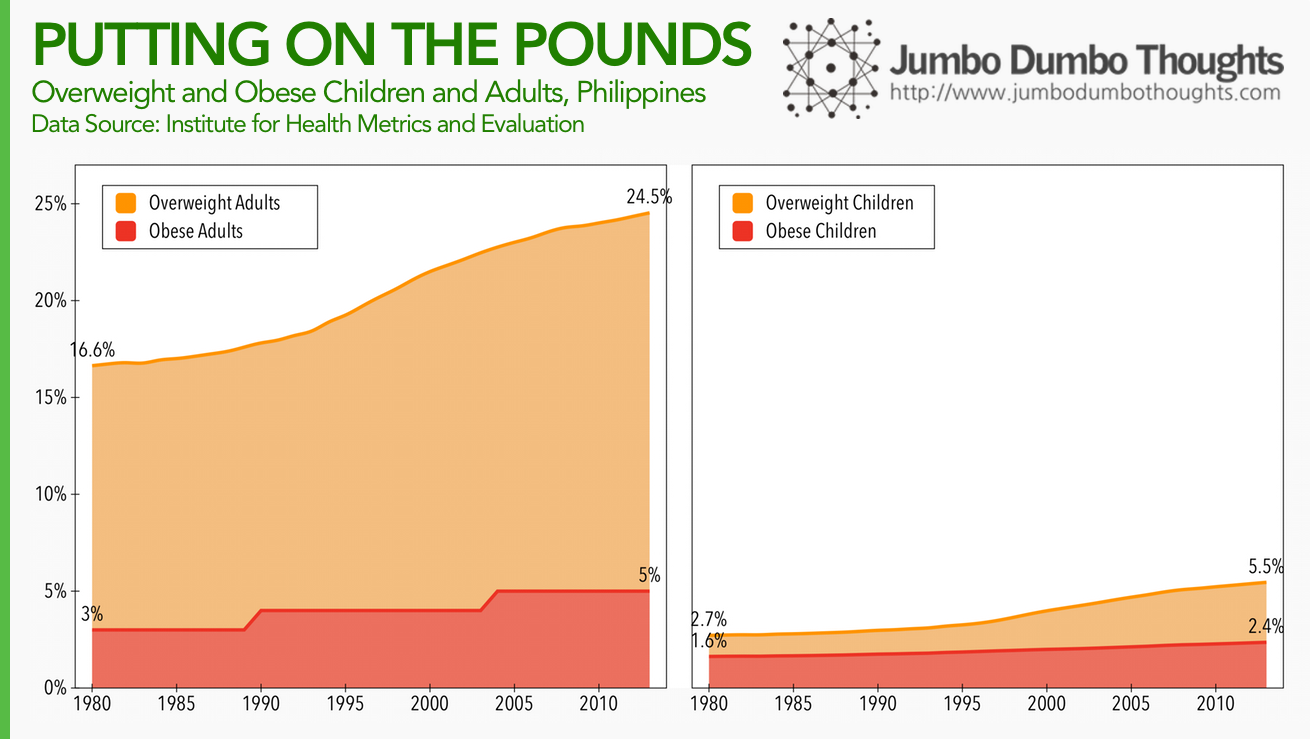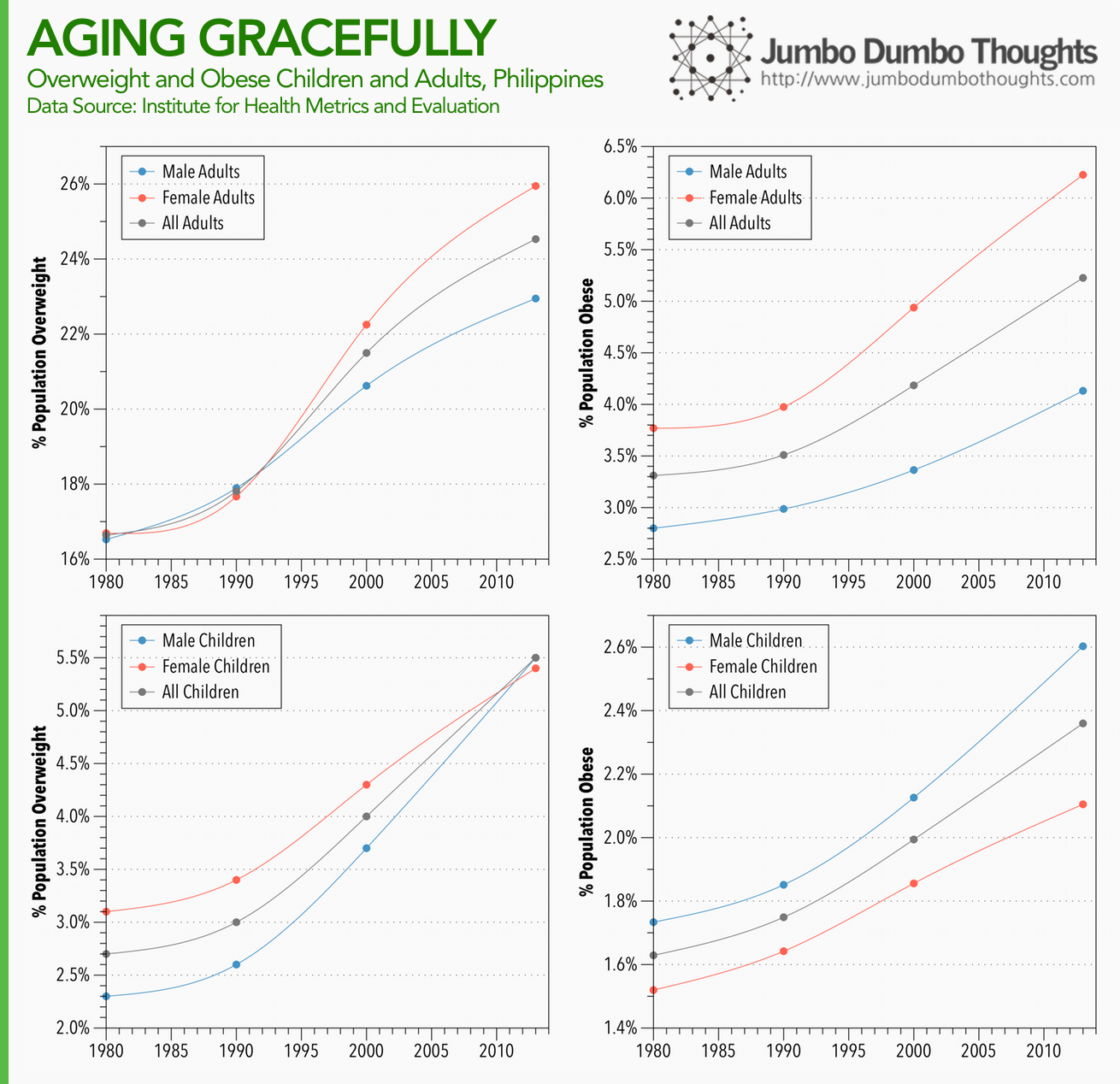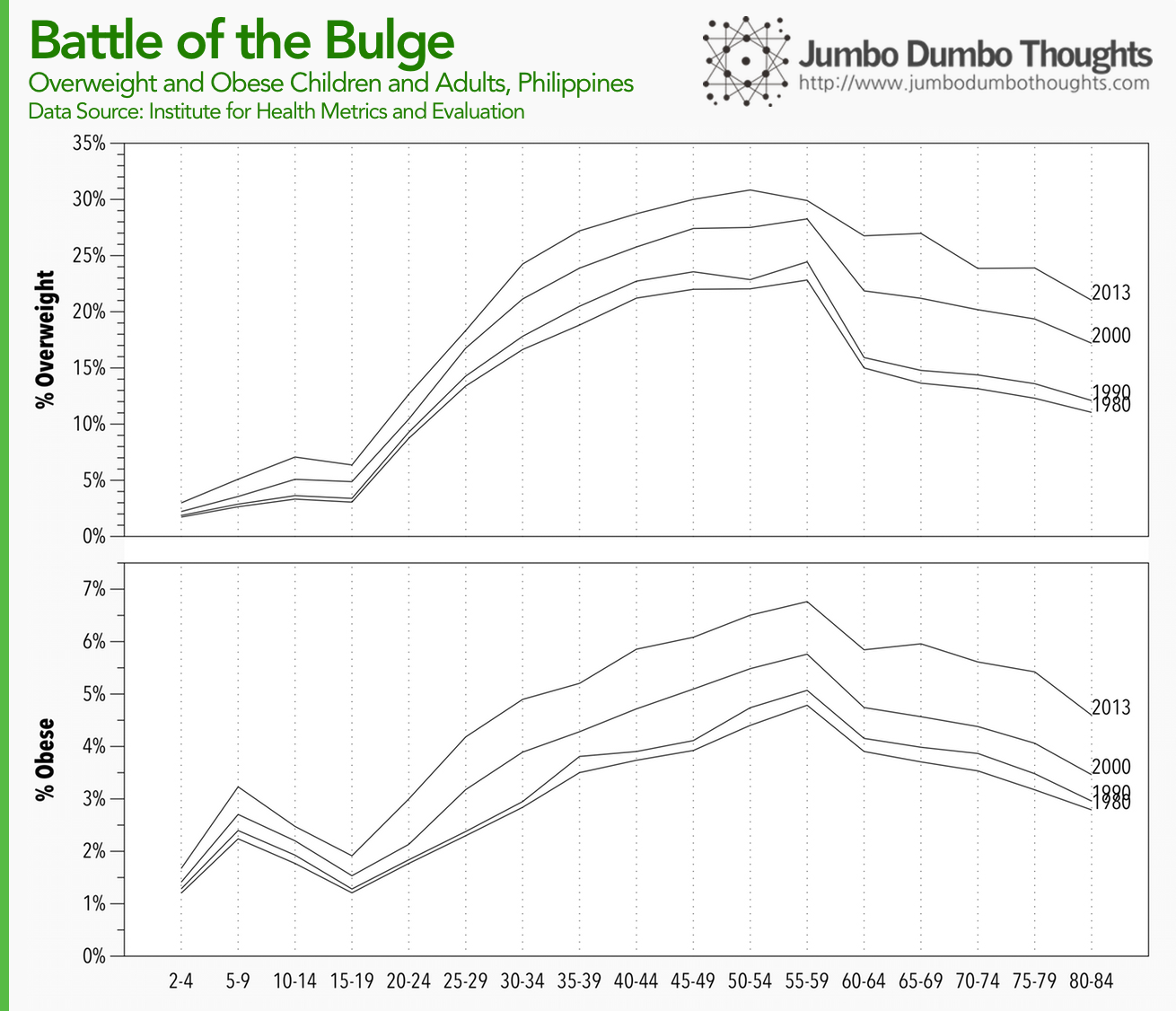Social Commentary
On the Overweight and Obese: 1 in 4 Filipino adults are overweight, 1 in 20 are obese

From roughly 16%, 25% of the Filipino population is now overweight. (Photo: Thomas Kohler/Flickr, CC BY-SA 2.0)
A report by the Institute for Health Metrics and Evaluation reveals that obesity for both children and adults is on the rise in the Philippines. While girls are less prone to obesity than boys early on, this trend reverses as they become adults. However, both sexes are still losers in the battle of the bulge, as obesity rates increase as they age.
Filipinos love to eat, and the latest report from the Institute for Health Metrics and Evaluation (IHME) show that it might be negatively impacting obesity and overweight rates.
First, let’s take a look at obesity and overweight rates for both children and adults over time:

From 16% (1 in 6) in 1980, Roughly 25% (1 in 4) Filipino adults are overweight. The obesity rate has also increased from 3% to 5% in the past 30 years. For children, the overweight rate has nearly doubled from 2.7% (1 in 40) to 5.5% (1 in 20). Obesity rates have also been on the rise.
Next, let’s divide up the population by gender to see the differences between males and females:

There is a peculiar trend going on between the sexes. Overweight and obesity rates for female adults are higher than for male adults, but the opposite is true for children. Is this the effect of pregnancy in adulthood?
Lastly, we cut the population into age groups, and see how that’s evolved over time:

Obesity and overweight rates peak in around your 50’s, and are lowest in the late teens. Funnily enough, this seems to correlate with income over a person’s lifetime. The wallet grows and shrinks with the belly, doesn’t it?
There you go: a quick data primer on Filipino obesity and overweight rates. I think I’ll have to take a rain check on that buffet dinner.
Thanks for reading! If you found this post interesting, I’d appreciate it if you shared it on your social networks, or shared your thoughts in the comments. Data can be gathered from the IHME website.
aliases: - 2014/06/obesity-ihme.html - content/blog/2014-06-15-obesity-ihme/obesity-ihme.html - posts/2014-06-15-obesity-ihme - articles/obesity-ihme
On Stochasticity

Sometimes the noise is more important than the signal.
It’s been a while since I’ve written anything original, so I’m planning to get back on track with this blog. No, this isn’t going to be an econometrics lecture, nor do I promise complete accuracy.

The ui represents stochasticity in this linear regression.
We all know that letter at the end of the sample regression function: u. It’s the stochastic disturbance term. Peculiarly, it is absent in the population regression function, the form and intensity of which is, according to my professor, only known to God. If you follow this vein of thought, you would eventually come to the conclusion that the u is simply the sum total of our ignorance. I disagree; I believe that the u represents something more than the lack of knowledge; it represents change and freedom. That u actually captures all effects, big or small, that weren’t and cannot be captured in the structured hash of the equation; the chaos in the world, as one might say.
On Interest Rates and Mortality

A limited time on this earth makes time precious.
I’ve always been puzzled by interest rates. They say it’s the price that relates future goods to present goods. Simply put, it’s a price tag on the ability to consume goods now rather than later (for example, a saver who defers the purchase of his marshmallows will get an interest on his savings for more marshmallows in the future.)
On Prices: Informative, Summative, and Coordinating
Nowadays, people usually take for granted that they can buy all sorts of stuff. It never crosses the mind how difficult it is to actually make the consumer products. As Milton Friedman demonstrates in the following video, no one person can make a product even as simple as a pencil from scratch.
It is only through the voluntary coordination of the efforts of various economic agents that we can make the products we use today.
Critical to this coordination is the price system which, through a simple number, informs the various economic agents on what to produce, how to produce, and for whom to produce in order to maximize profit. This allows people, who might not even know each other, to cooperate and produce immense value for the economy.
This video is actually based on an essay by Leonard Read entitled “I, Pencil”. To sum up, here is a TED talk by Thomas Thwaites where he narrates how he tried to make a toaster from scratch.
aliases: - 2012/04/on-prices.html - content/thoughts/2012-04-19-on-prices/on-prices.html - posts/2012-04-19-on-prices - articles/on-prices
On Facebook News in the Philippines: Using topic modeling to find trends in online news coverage
Facebook has become one of most visible sources of news in the Philippines, and it has arguably played a huge role in shaping Filipino views. We take a look at how the Philippines news cycle evolved with by using topic modeling.
Read More →